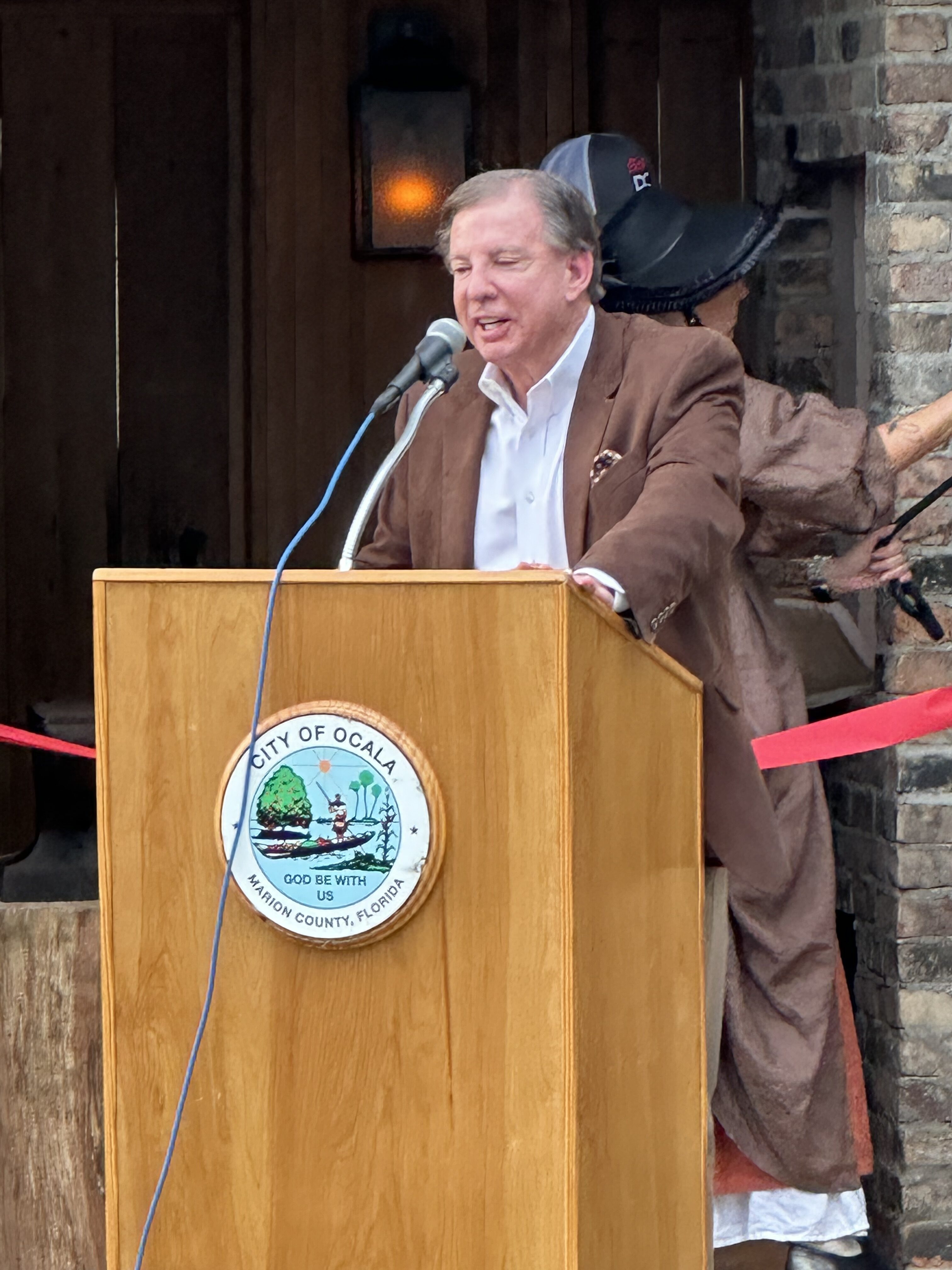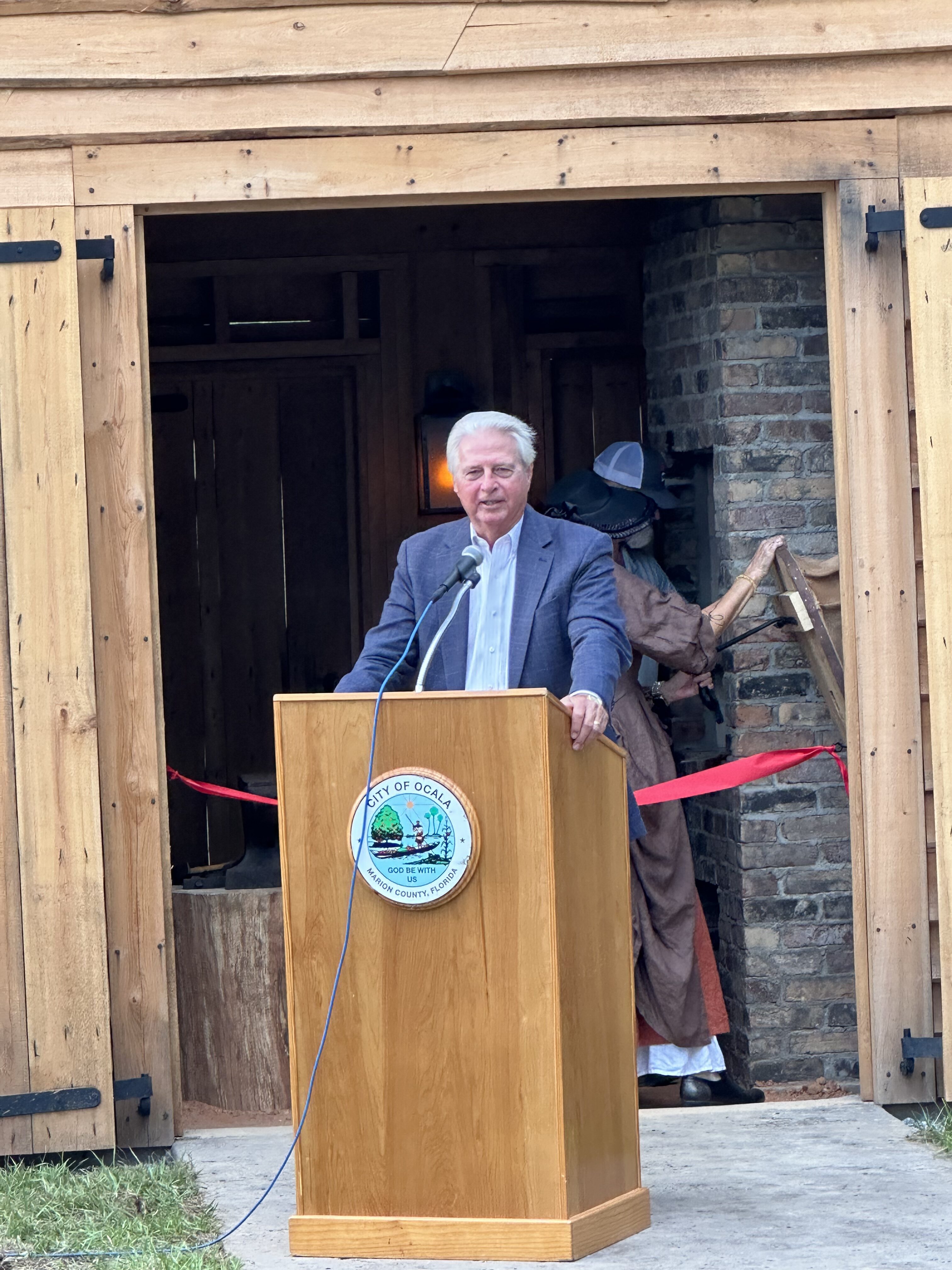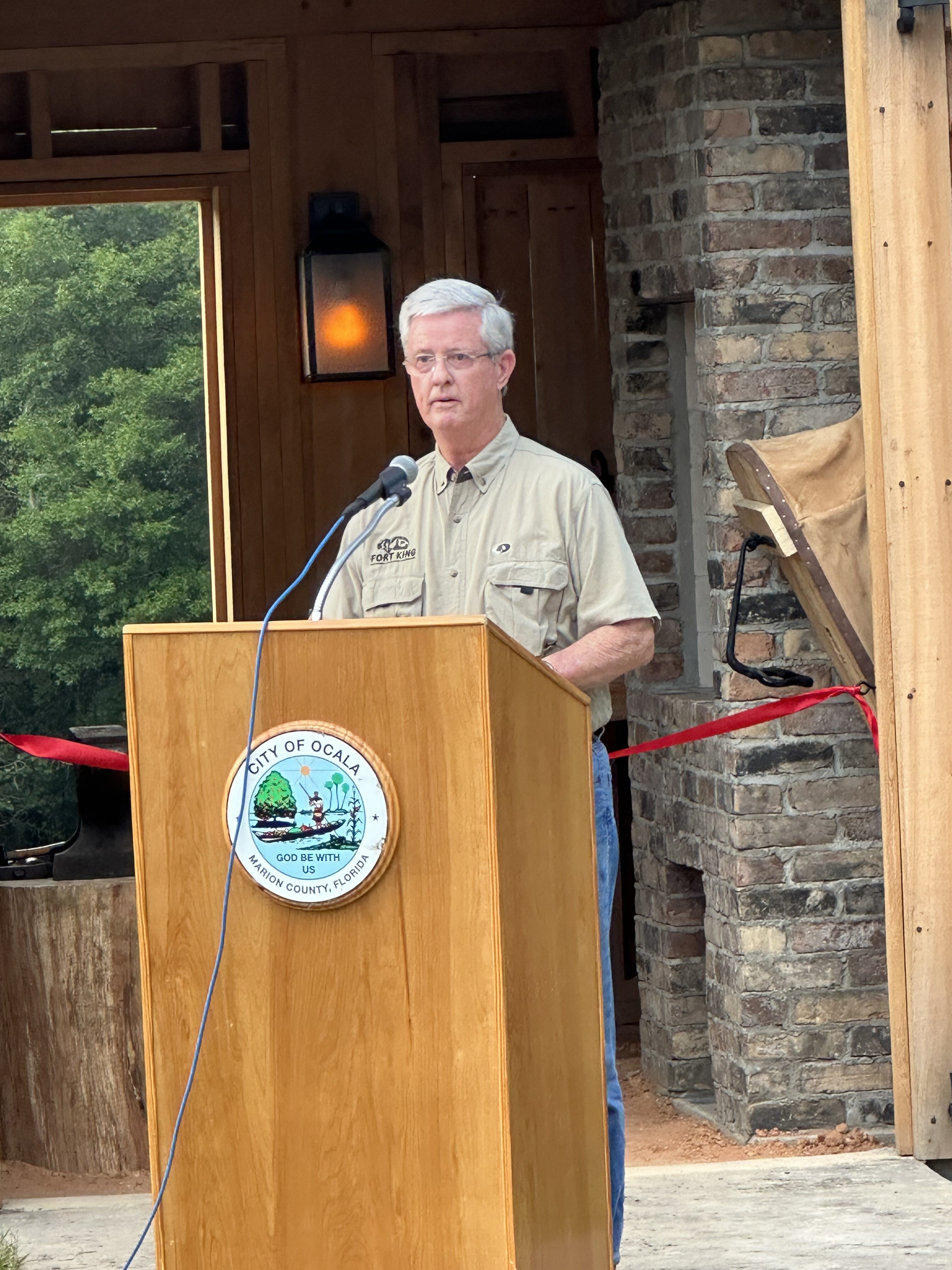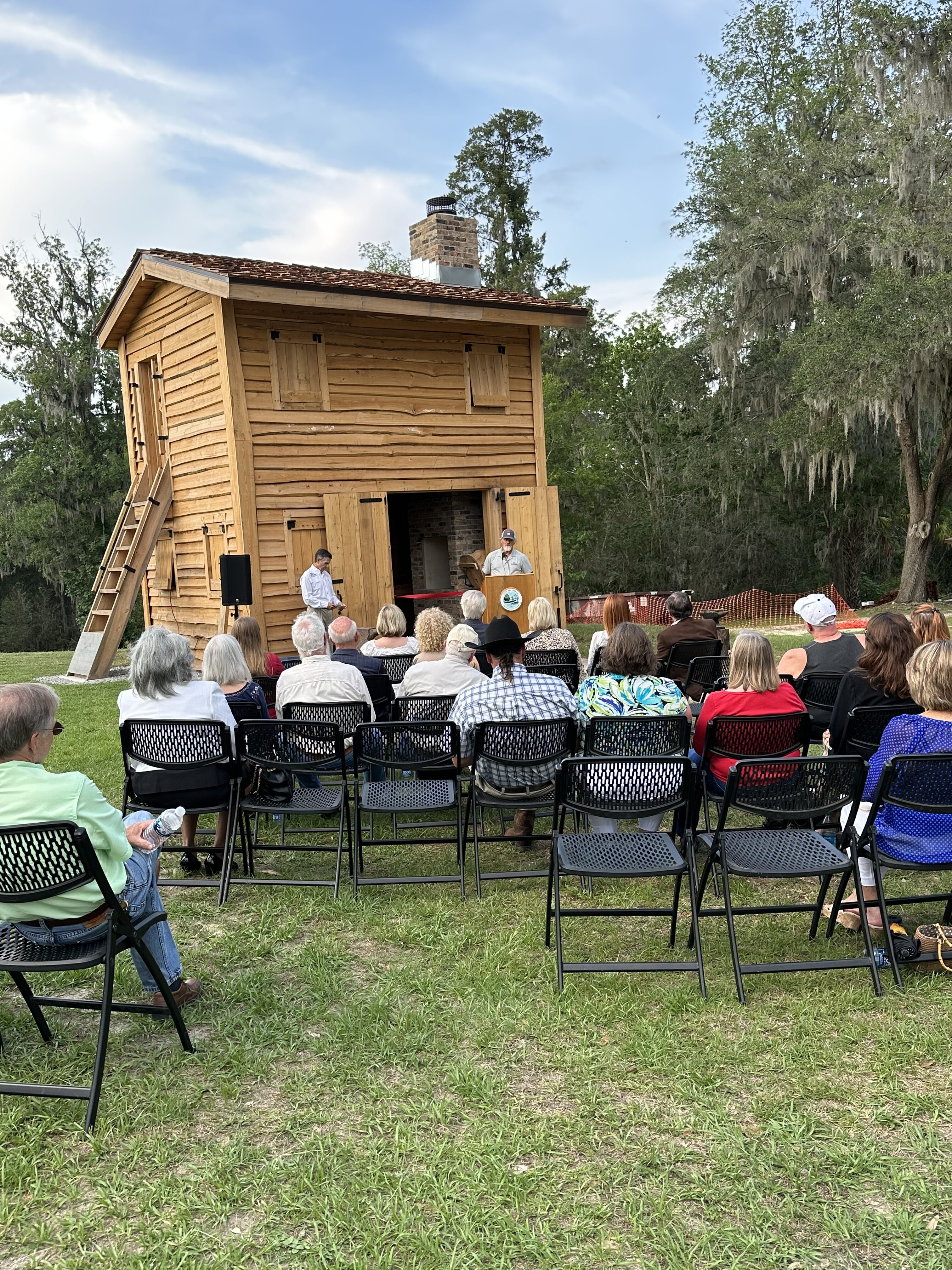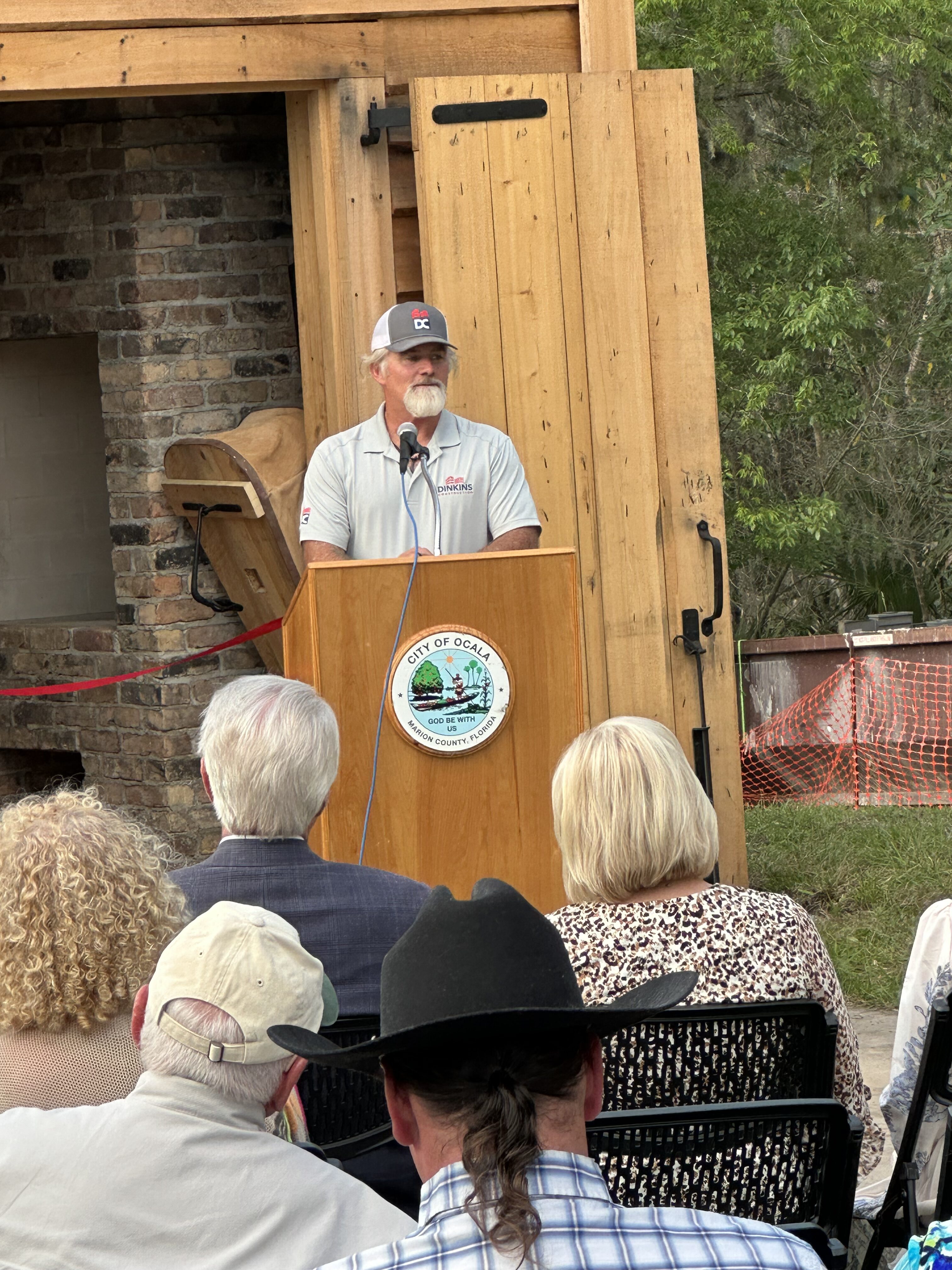On May 11th, we celebrated history with the dedication of the Blacksmith Shop at Fort King in Ocala. The ceremony marked a long-awaited step forward for the historical site.
The Dedication Ceremony
Guests were welcomed by re-enactors in period dress and were invited to explore the Fort, especially the new blacksmith shop. It was a memorable experience, where each person was given one of more than 2,000 nails that Keith Hill, with Dinkins Construction, forged at home.
Re-enactors successfully fired the M1841 Mountain Howitzer Cannon to start the ceremony, which featured many speakers.
Every day, Keith Hill, the project manager for the blacksmith shop, would work eight hours on site, then go home to forge the nails. He spent hours studying how things were built, how hinges were made in the 1830s and more. He spoke with archaeologists who had found many artifacts near the site. Having retired from his job as a first responder and 9-11 rescuer, he began ironworking and led the charge for the blacksmith shop. The History Channel “Forged in Fire” champion told the crowd that he did his best to “represent the community, represent the past.” During the ceremony, he gave demonstrations and could be seen with his wife, Janice, pumping the bellows behind the speakers.
This is a labor of love. This is where it all started in Ocala and Marion County. Not many projects have this kind of economic impact. History and education is the basis for the community.
Craig Curry, County Commissioner
Bill Tucker, former Fort King Heritage Foundation president, spoke of the importance of the blacksmith shop and its relevance to history. He shared his vision of tens of thousands of people coming to the Fort King site in the future.
Ben Rogers, the owner/operator of Tinker’s Forge in Reddick, gave a demonstration on how to forge on an anvil, and Allison Campbell, representative of the Marion School Board spoke of the importance and significance of the Fort King site on the education of youth on our history.
Frank DeLuca, the guest speaker, was introduced by a past president of the Fort King Heritage Foundation, Charlie Stone. Charlie also had a significant impact on raising funds for the blacksmith shop. Other speakers included Craig Curry, Marion County Commissioner.
Why it Was So Important to Build the Blacksmith Shop
As Bill Tucker, former President of the Fort King Heritage Foundation, informed the crowd in a fascinating historical discussion at the dedication, Fort King was a military complex that had many needs and served many purposes. It was the center of civilization for non-Native people who migrated to the area, people who wanted to be close to the fort for the protection it offered. When war happened, the fort could close its gates and thus needed to be able to provide for the community. These needs were met with a hospital, a sutler’s store, and a blacksmith.
In many cases, the blacksmith shop considered the start of civilization to pioneers and soldiers, was built before anything else. It was the key to survival and expansion during the Florida frontier period because the blacksmith could shoe horses, fix kettles, mend wagons, and produce the hardware and nails needed to build a fort.
Historical Accuracy is Important to the Building Process
It was shortly after the walls of the replicated fort were raised that the Fort King Heritage Foundation’s Board of Trustees began discussing building the blacksmith shop. It became the major project of the Foundation. As every proposed building undergoes a lengthy process of research and archaeology, the process began with an illustration sketched out of the journals of Lt. John Sprigg.
It was in April of that year that the archaeologist, Gary, completed and delivered the archaeologist report for the blacksmith shop’s site. At this point, the only hindrance left was funding. The Board of Trustees stepped up to make that happen.
Looking to the Future
The guest speaker for the event, Frank DeLuca of DeLuca Toyota, spoke passionately about his pride in the blacksmith shop project. As a major donor, he made it possible for the shop to be built and shared the spotlight with the many others involved. He joked of similarities between the blacksmith and himself: one replacing horseshoes for their transportation of the day – horses, and himself for replacing tires on Toyotas.
I always say that giving back – not only does it feel good, but it’s the right thing to do.
Frank DeLuca, DeLuca Toyota
Frank spoke of his first visit to the Fort King site when Bill McCall showed him where the fort would go and where the blacksmith shop would be located. He expressed joy in seeing that dream of many years ago finally becoming a reality, and took pride in having something that’s a historic landmark that he can say, “I got involved in it, and made it happen.”
The Fort King Heritage Foundation doesn’t plan to stop with the blacksmith shop. It’s always looking to continue to restore the buildings and bring more history back to the site. You, too, can be involved in it – make it happen.

